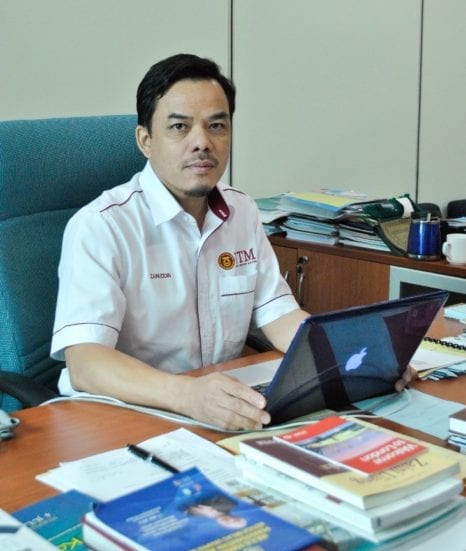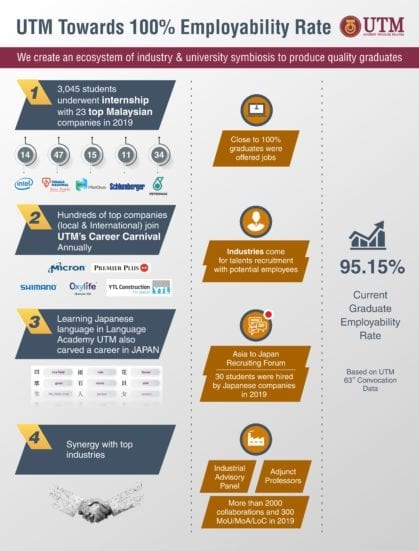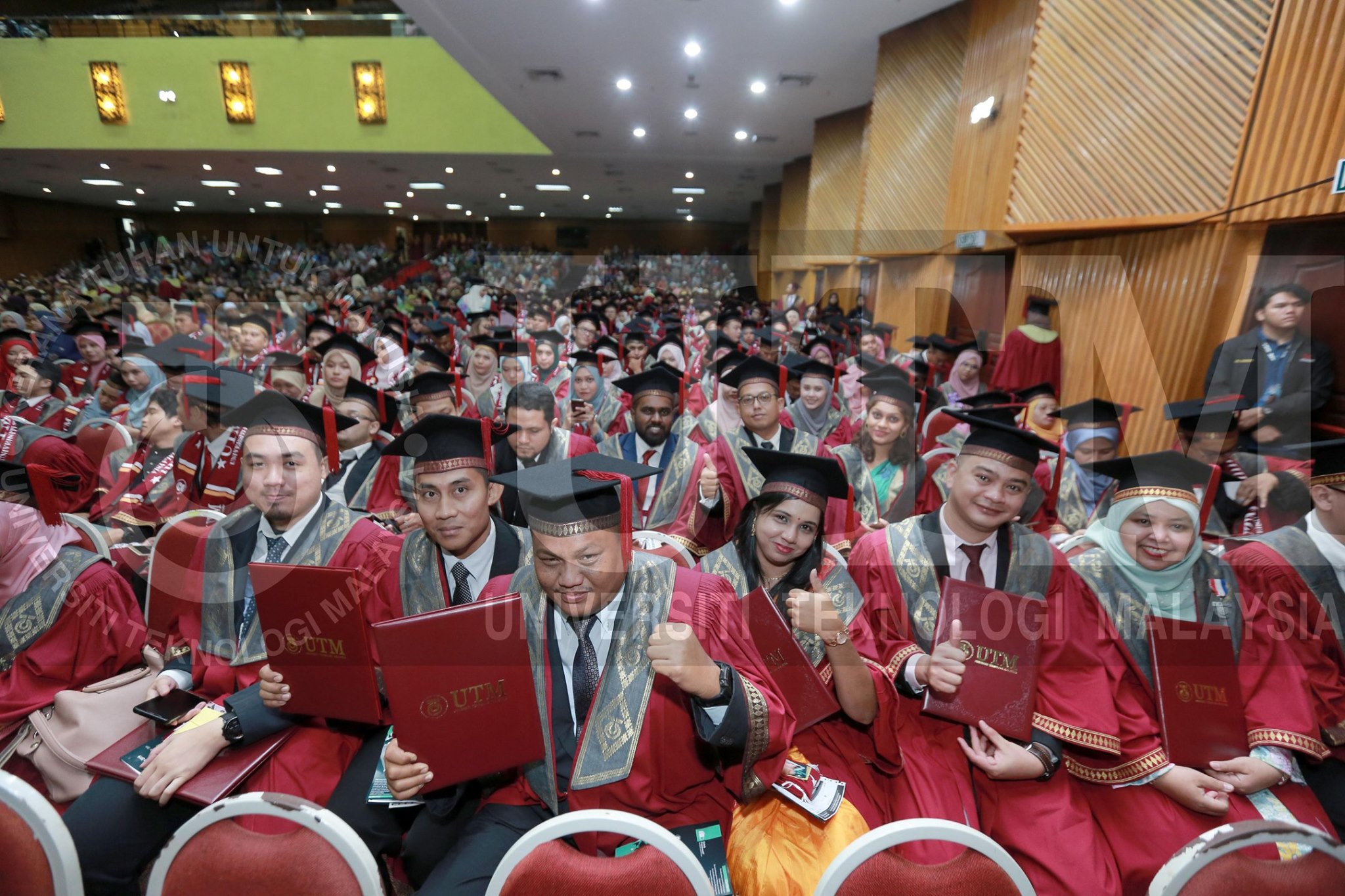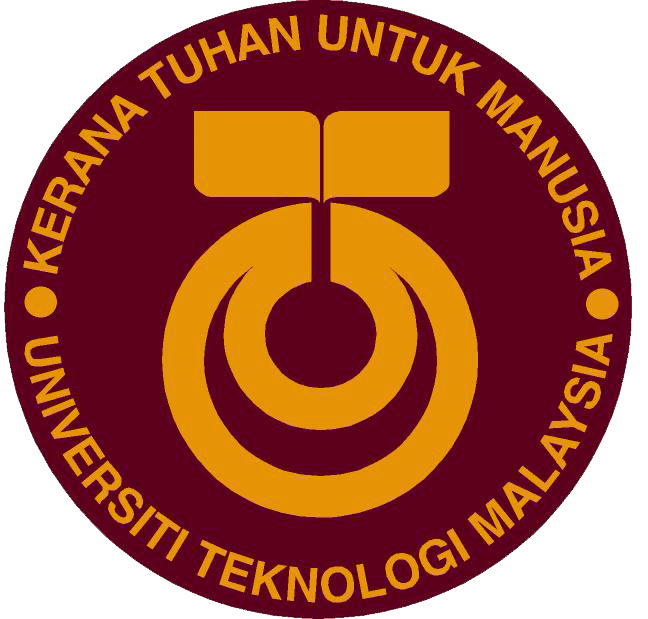
Why has there been so much media focus on graduate unemployment?
Of all the metrics used to rate a Higher Education Institution (HEI), I pick graduate employability (GE) as the bottom line measure of a HEI’s impact on a nation.
This is because, graduates of HEI are among white collar workers who are the key drivers of business entreprises, corporations and institutions whose success are instrumental to a nation’s economic performance. High white collar unemployment could threaten industrial and business productivities, and may lead to economic slowdown and recession.
Societies are equally sceptical and unforgiving when it comes to HEI’s claim of rank, prestige and quality, but, at the same time, struggle to get more than 80% of their graduates being employed or becoming entrepreneurs within a year of graduation. While benchmarking tools such as world university ranking maybe essential to gauge an institution’s global standing, HEI should be ever prepared to respond to parent’s bottom line question – Is this program going to land my child a job?
So, if we wonder why GE has never failed to capture news headlines and the attention of the public, industry and politicians alike, it is because GE has a high stake at impacting a nation’s economic performance, and could potentially make, or break a government.
Four Rarely-Told Stories Surrounding Graduate Unemployment
At the risk of being labeled a heretic and a deviant preacher of Zero Graduate Unemployment (ZGU), let me begin by narrating four rarely-told stories on why I believe ZGU is in fact, a modest proposition, and on myths about skills gap, the future of work and “60% employability of Malaysian HEI graduates”. I shall then highlight UTM’s “Hi-5” strategies and initiatives in achieving ZGU and finally, our latest graduate employability feat.
Rarely-told story 1. Zero Graduate Unemployment is a modest proposition.
The 2006 Nobel Prize Winner Professor Muhammad Yunus shared his experience of working toward zero unemployment to liberate the poor and poverty-stricken people across the world in his book A World of Three Zeros [1]. His success makes my somewhat flashy Toward Zero Graduate Unemployment title, a modest proposition. If he could achieve zero unemployment for the poor, emulating his feat for graduates of HEI should be a walk-in-the park by comparison.
Rarely-told story 2: “Skills gap” is a half-truth.
Skills gap has been cited as one of the leading reasons for graduate unemployment. The perennial complaints are that graduates lack the needed experience, the relevant professional and technical skills, apart from soft skills to be hired by employers.
Matthew Yglesias, co-founder of Vox.com summarised the findings of a paper by Alicia Sasser Modestino, Daniel Shoag, and Joshua Ballance [2] who indicated that skills gap was the outcome, rather than the cause of, high unemployment. Their analysis of a set of 36.2 million online job postings collated by Burning Glass Technologies within a 12-year period (between 2006 until 2014) revealed that the experience and education credentials sought by employers steadily rose with unemployment rate during the Great Recession.
Their findings showed that employers reacted to high unemployment by tigthening job descriptions. When unemployment rate started to drop thanks to economic recovery, employers suddenly became more lenient. With workers plentiful, employers took the liberty to demand lots of experience and educational credentials, and avoid investing in training workers. It is during this time that employers have a field day giving media commentaries on how HEIs and the government should fix the skills gap issue for them. Today, fewer employers are willing to train people on the job than they were 50 years ago. A US government report revealed that employer-sponsored training fell 42 percent between 1996 and 2008, largely as part of an effort to cut costs [3].
Rarely-told story 3: Over a century of revolution proved that technology has created more jobs than it has eliminated [4].
Contrary to widespread concern that the rise of machines is threatening future jobs, findings by Deloitte economists who studied the link between jobs and the rise of technology, going back to 1871 census for England and Wales, revealed that technology has created significantly more jobs than it eliminated. Progress in technology has in fact:
- Reduced Daunting, Dangerous and Dull (3D)
- Shifted labour demands from its historic role as a source of raw power, to the care, education and provision of services to others.
- Increase productivity and boosted jobs in knowledge-intensive sectors including medicine, education and professional services
- Shifted consumption to personal care and services, leisure, entertainment and grooming; creating more jobs in this sector.
Rarely-told story 4. Most graduates assumed “unemployed”, are actually untraceable.
This issue relates to the “Sistem Kajian Pengesanan Graduan (SKPG)” tracer study survey that graduates of Malaysian HEI are expected to complete to keep the authority and HEIs informed of graduates’ achievements and GE status. Malaysian HEIs have generally made filling SKPG1.0 (the first phase tracer study) a condition for graduates to attend their convocation ceremonies (convo) which usually occur within three months after their graduation. Those who were unemployed when they completed SKPG1.0 have up to nine months to update their GE status in the second phase of the survey (SKPG2.0). Because SKPG1.0 is typically a requirement for attending convo, almost all graduates should have filled SKPG1.0. However, at the time of convo, on the average, only about 50% graduates have been employed. Many graduates choose not to work before convo so that they could spend a week to attend convo, and avoid taking long holidays just a month or two after being employed.
After the convo, updating graduates’ status in SKPG2.0 is practically done voluntarily. Herein lies the major issue about the GE status of Malaysian HEIs. Now, let us be brutally frank about surveys. Graduates are humans like us. They treat surveys the same way we all do. Without any compelling reasons for them to complete the SKPG2.0 survey, the majority, especially those who have had job security, would naturally skip filling survey forms. Universities with a high number of international students face bigger problem of contacting and tracing the whereabouts of overseas graduates. So, if we were to rely solely on voluntary survey, at best, the GE status of HEIs would only be around the 50% status recorded through the SKPG1.0 convo prerequisite.
Is it a wonder that the average GE status reported for Malaysian HEIs revolve around 60% just because 40-50% graduates have yet to update their GE status?
In overcoming the limitation inherent in all forms of survey, we have designed a “gate-to-grave” eco-system of preparing graduates with a mission to prosper lives. Our program includes an elaborate support system for ensuring graduates’ traceability that will contribute toward ZGU.
What are the solutions to address graduate unemployment?
By focusing on the top 5 HE fundamentals, or what I call the “Hi-5F” (High Five Factors); approaching zero graduate unemployment (ZGU) could be made a culture and the “nasi lemak (bread and butter) of HEIs. Allow me to use an analogy of a food industry as a memory-friendly way of presenting our Hi-5F.
Let’s say we intend to make “wellness food” a popular choice. The Hi-5F, or the top 5 fundamentals of the “wellness food” is to 1. Communicate the desired impact and specify the measure of success, 2. Create the secret recipe, 3. Plan and nurture great chefs, 4. Design an efficient delivery system, 5. Create a continuous quality improvement (CQI) process to be the best.
Next, we present each element of the Hi-5F applied to the context of our goal of widening access to quality education.
Hi-5F1. The Desired Impact: Graduates Prospering Lives; Impact Measure: Toward Zero Graduate Unemployment (GE of 95% or more).
The first of our Hi-5 fundamentals is to drive UTM’s mission of prospering lives. To this end, we set the target of developing UTM Life-Ready Graduates (LRG) (graduates who proper lives; associated with “kemenjadian graduan”) within five years of graduation. Our “immediate” impact indicator is to work Toward Zero Graduate Unemployment (GE approaching 100%) within 1 year of students’ graduation.
UTM recently established the Institute for Life-Ready Graduates (UTM iLeaGue) aimed at developing holistic talents (Shift 1 of the National Higher Education Blueprint) who embody wisdom, humanity and entrepreneurial qualities in line with UTM graduate attributes, UTM core values and the National Education Philosophy. The “graduates prospering lives” iLeaGue impact statement is not just about preparing our graduates for employment. It underscores our commitment to work together with stakeholders to ensure that every single UTM graduate is not only employable, but more importantly is capable of holding a responsible management or leadership position that will positively impact their organisation and society wherever they are deployed across the world, be it as an employee, an entrepreneur or self-employed.
The next four Hi-5Fs constitute key actions that will ensure our LRGs are not only job and future-ready, but will also be the ones to create jobs and shaping the future job market many decades down the line in their mission to prosper lives.
Hi-5F2. The Secret Recipe: Flexible, Future-Ready Curriculum to Address the “Go-Pro-Early” Disruption
The biggest disruption in HE is the shift toward the “go-pro-early” new norm of getting a job to get a degree, instead of the traditional practice of getting a degree to get a job [5].
The Kaplan University Partners-Quest Research [6] study estimated that up to one-third of high school graduates in the next decade will “go-pro-early” and start working directly out of high school while studying for a degree as part of the job package. The study listed that high tuition fee, ever changing skills need and high loan debt as the main motivations to go-pro-early.
Hi-5F2 includes key shifts toward a curriculum (recipe) that is work/career-based, flexible and 4IR-ready that are designed to produce marketable, recession-proof, and ultimately, life-ready graduates who can rise above 21st century grand challenges including the go-pro-early disruption.
By mainstreaming elements of work-based learning, community service learning and entrepreneurship in HEI curriculum right from the first year of study, we have made go-pro-early accessible to both working people and fresh high school leavers pursuing higher education. At UTM, the traditional practice of having a short industrial training or odd career days toward the end of a degree program has undergone sweeping transformation toward customised and immersive UTM-Industry Innovation Exchange (UNIX) project that includes up to 50% work-based learning elements in close collaboration with over 2000 UTM industrial collaborators. The partnership combines industrial training, trans-disciplinary action research and design projects that embed contemporary challenged-based topics including 4IR elements as part of student learning time (SLT) to enable students to be inclusively involved in real-life problem solving that benefits industry and community.
Next, curriculum flexibility and personalisation are the key to turning around the go-pro-early disruption into a major opportunity. Both, working and full-time students can now have access to flexible, lifelong, quality-assured education offered by universities. For example, UTM School of Professional and Continuing Education (UTMSPACE) that was established in 1993 enabled access to more than 160,000 working people who pursued degrees and programs on flexible modes. UTM, through UTMSPACE is the only Malaysian university that offers part time engineering degree that is accredited by the Malaysian Engineering Accreditation Council (EAC) and the Washington Accord.
UTM also offers a wide range of flexible programs such as part time diploma, executive programs, modular and special programs, industrial master/PhD through residential as well as blended, online distance learning and remote supervision. Learners can benefit from program personalisation through flexible supervision and micro credit transfer not only from academic courses, but also from accummulated professional short courses and from extra-curricular activities such as volunteerism and gap year programs. Learners without sufficient academic qualifications may apply to enrol in UTM academic programs, using equivalent prior working experiences through APEL (Accreditation of Prior Experiential Learning) Centre.
Whatever the future job market will look like, the goal of prospering lives has been readily designed into our flexible 21st century curriculum in close partnership with key stakeholders to boost the chances of study success while “going pro”, both for high-school leavers and full time working professionals.
Hi-5F3. Great Recipe Calls for Great Chef: Future-Proofing Educators
After designing the Recipe to achieve the desired impact of our products, the next key element of the High Five is to hire/train the right “Chef”; i.e., the Future-Ready Educators (FREE). There has been over-emphasis on future-proofing students as compared to educators. It is therefore not surprising that many educators are still practicing the old norm of largely teacher-centric pedagogy (Educators 1.0 and 2.0) that is applicable to students of the past who were regarded as receptacles of knowledge.
The great educator, John Dewey famously said about 100 years ago; “If we teach today’s students as we taught yesterday’s, we rob them of tomorrow.”
In nurturing life-ready graduates of tomorrow, hiring and training of FREE (Educators 4.0) have been made our new norm. Our educators 4.0 undergo rigorous training to be technically-competent mentors who are drivers of change and motivators of student-centred learning; apart from being experienced researchers and certified practitioners.
Across the world, the eco-system of future-proofing educators is in dire need of fundamental and structural revamp. Existing systems that are highly biased toward rewarding research excellence need to be balanced so that teaching excellence is equally (if not more) rewarded and encouraged. In addressing this challenge, UTM has developed the People@Faculty programs to holistically future-proof educators through the planning and development of support processes and programs as well as conducive assessment and reward system for teaching excellence.
Hi-5F4. Efficient, Tech-Driven Product and Program Delivery
Central to UTM’s mission of widening access to quality education is the advancement of digital and lifelong Trans-National Education (TNE).
Our mission demands educators to break free from the old norm of teaching in conventional lecture rooms, and in the confine of “ivory-tower” campuses.
Instead, we train educators to embrace the new norm of delivering quality education through flexible and “4A” ubiquitous learning (technology-enabled learning Anything by Anyone, from Anywhere at Anytime); to employ challenge-based experiential learning (mobilising students, industry, policymakers and community in real-life programs and projects); and, to empower learners to adapt heutagogy and peerogogy (self-directed, student-centred and co-operative learning).
The process is expected to contribute to our goal of nurturing holistic graduates who are lifelong learners, global citizens and ultimately, prosperers of lives. Technology-enabled effective delivery also overcomes the critical need for people and place resources in widening access to TNE.
Hi-5F5. Eco-System of Inclusive Continuous Quality Improvement through Research on Big-Data Analystics, Real-time Stakeholders Engagement and Rigorous Quality Assurance.
UTM Institute for Life-Ready Graduates (UTM iLeaGue) is a globally unique institute that has been established to pave the way on Big-Data Analytics (BDA)-driven research focusing on holistic student development. UTM iLeaGue is also empowered to offer innovative trans-disciplinary programs while mobilising learners and stakeholders in a continuous feedback loop aimed at effectively nurturing life-ready graduates. Our system predominantly implements alternative assessment in the form of authentic, challenge-based problems and projects, apart from formative and summative personalised and real-time assessments, and least of conventional standardised tests and exams.
We closely collaborate with local and international stakeholders from among industrial and academic experts, captains of industry, entrepreneurs as well as policy makers whom we appoint as adjunct lecturers/professors, expert advisors, supervisors, assessors, evaluators and advisory council members. Continuous engagement with stakeholders allow them to participate in, and provide feedback for, our academic and extra-curricular programs, activities, events and projects. Leading corporate figures and entrepreneurs such as Tan Sri Azman Hashim (Executive Chairman, Amcorp Group Berhad), Tan Sri Tony Fernandes (Group CEO, Air Asia berhad), Tan Sri Vincent Tan (Founder, Berjaya Corporation), Tan Sri Lin See Yan (former Deputy Governor, Bank Negara Malaysia) and Tan Sri Azman Mokhtar (former CEO, Khazanah) among others, are UTM top advisors who contribute in our leadership mentoring, people development and driving organisational excellence beyond the confine of traditional HEIs’ industrial advisory panel (IAP) role of academic curriculum review.
As a university awarded the autonomy for self-accreditation, UTM employs an Internal Quality Assurance (IQA) system and works hand-in-hand with our stakeholders to enculture quality. Our curriculum receives continuous feedbacks from national and international experts and practitioners, and goes through rigorous quality assurance audit by national and international professional and accreditation bodies.
UTM’s Graduate Employability Performance
Amidst 21st Century grand challenges associated with the future of work, UTM has set its sight on a bold target of 95% graduate employability (GE) by the year 2020. As of February 29, 2020, UTM’s GE achievement is at 95.15% with respect to its 63rd convocation census. Thirteen of our academic programs achieved 100% GE, while many of our graduates were hired locally and abroad. In the recent Asia to Japan Recruiting Forum, for example, 30 UTM graduates were hired by Japanese companies. In 2019, UTM Career Centre that annually attracts hundreds of leading local and international companies to UTM career carnival received top recognitions as the Job Street Preferred Career Centre and the Top Three Career Centres in Malaysia.
While the achievements set us ahead of our GE target of 95% by the end of 2020, we are ever wary of the challenges of sustaining a high GE target in the long run. Building a robust ecosystem of prospering lives together with our stakeholders through disciplined and effective execution of our Hi-5 initiatives is expected to sustainably contribute toward achieving our goal of zero graduate unemployment.

References:
- Muhammad Yunus, “A World of Three Zeros, The New Economics of Zero Poverty, Zero Unemployment, and Zero Net Carbon Emissions”, Hachette US, 2017.
- Alicia Sasser Modestino, Daniel Shoag, and Joshua Balance, “Upskilling: Do Employers Demand Greater Skill When Workers Are Plentiful?” Paper presented at American Economics Association’s annual conference, January 2019.
- Katie Allen, “Technology has created more jobs than it has destroyed, says 140 years of data”, The Guardian, 18 August 2015.
- Gretchen Frazee, “How colleges are preparing students for jobs that don’t exist yet”, PBS News Hour, December 6, 2018.
- Brandon Busteed, “This Will Be The Biggest Disruption In Higher Education”, Forbes, April 30, 2019.
- Kaplan University Partners-Quest Research study, DESTINATION COLLEGE Exploring New Routes to Success. 2019.



